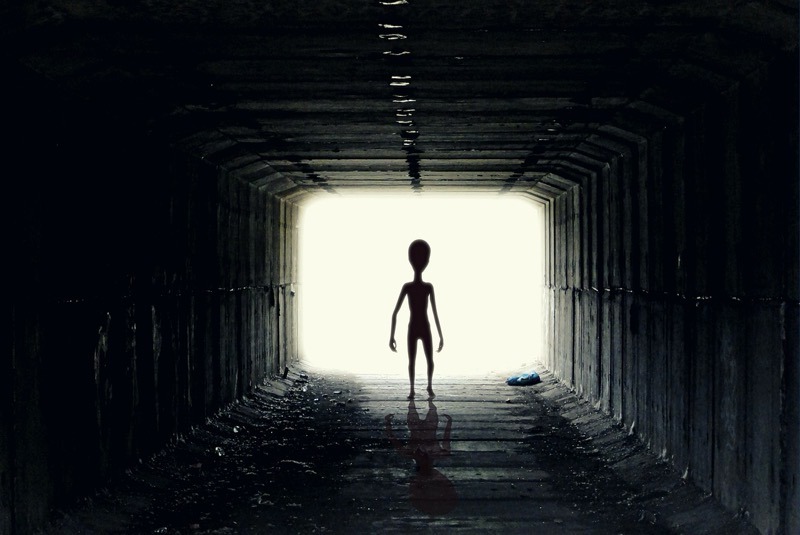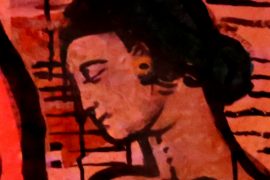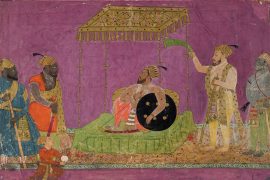Tell Satyajit, I was a kid in High School when his script was circulating in Hollywood.
Spielberg announced amidst accusations that the E.T. director had plagiarised Satyajit Ray’s work. The work in question was the script of Ray’s ‘The Alien’. In 1967, the film was supposed to mark a turning point in Indian cinema. Instead, it was lost in the winding channels of Hollywood. Ray later said in an interview:
I knew all along that I was being taken for a ride, but the funny thing was that the desire to experience the whole thing was also irresistible.
Ray was fascinated with science fiction. The man was known, especially among his Bengali audience, as the creator of Professor Shonku, the fictional swashbuckling scientist. His pieces, Shades of Grey and Abstraction, graced the Amrita Bazaar Patrika in the 1940s.
Yet, The Alien’s journey started on the sets of 2001: A Space Odyssey. There, he met science fiction author Arthur C Clarke and shared the idea for The Alien based on his Bengali story Bonkubabur Bondhu or Bonkubabu’s friend. At Clarke’s behest, Ray crafted the screenplay for The Alien.
Set in Bengal, Ray envisioned the film as an English-Bengali bilingual called The Alien in English and Avatar or Mangal Kavya (or the Martian Tales) in Bengali. The film tells the tale of Haba, an orphan boy who lives with his arthritis-afflicted grandmother. One day, an alien ascends to the God-forsaken village of Mangalpur, where his spaceship is taken to a submerged temple.
The mischievous creature — with its large head, sunken cheeks and three-fingered hand — dances with fireflies, blooms, lotuses and heals bleeding wounds.
The film explores various themes — from childlike wonder to narratives of society and religion. Its bustling cast of characters: the businessman Bajoria, who tries to drum up a tourism business surrounding the ‘temple,’ the sceptical newspaper reporter and his new wife, Kalyani and the American Engineer or ‘Mr America,’ flanked by a Christian missionary and the Santhal tribesmen. They lend a quality to the script that can only be described as quintessentially Ray.
Impressed with the screenplay, Clarke sent it to his friend Mike Wilson. Wilson was a character — a diver who had discovered a chest of Mughal Coins and the producer of the Sri Lankan James Bond, or James Banda.
The man soon reached Calcutta with an introduction from Clarke and took Ray to Paris, where they negotiated with Peter Sellers for a role in the film. The duo landed in Los Angeles, where Wilson took Ray for a ride in a Lincoln convertible and put him up at the Chateau Marmont on Sunset Boulevard. But he forgot to mention that a hefty advance was paying for the extravagances.
Wilson had received a letter from Columbia, where he had put his name on the script as a co-author. But blaming Wilson alone for the project’s failure would be hasty, as Seller, too, decided against playing the businessman Bajoria in the movie. As a response to his decision, Ray penned a poem,
Dear Peter
If you had wanted a bigger part, Why,
You should have told me right at the start,
By disclosing it at this juncture
You have surely punctured
The Alien – balloon
Which I daresay will be grounded soon
Causing a great deal of dismay
To Satyajit Ray.
Ray dissociated himself from Wilson, and the prospects of the film ever being made faded as quickly as they had gained momentum.
More than a decade later, on a visit to London, Arthur C Clarke watched the critically acclaimed E.T. the Extra-Terrestrial. To him, the similarities were unmistakable: the bulbous head, skeletal structure, slow-moving three or, in ET’s case, four-fingered hands, and the ability to make flowers bloom. The similarity also seemed to seep into the base plot: the friendship between the young boy and the friendly alien.
Struck by the resemblance in visual depiction and plot points, Clarke called Ray and asked him to speak to Spielberg. In an interview with Aseem Chhabra, Arthur Clarke said:
I told Satyajit that he should write politely to Spielberg and say, ‘Look — there are a lot of similarities here,’ but don’t make any charges or threats.
However, Ray was not in a vindictive mood and said that Spielberg could simply deny it, and he was in the midst of another movie at that time. Despite this, the director sounded dejected to Aseem Chhabra. He revealed:
Sometimes I feel I ought to do something about it, but here I am in India in the middle of a film myself. I can’t do anything by correspondence. Besides, he (Spielberg) can deny it. What he has done is ruin my chance of making the film because then people will say it came from Spielberg.
He also said that neither E.T. nor Spielberg’s 1977 film, Close Encounters of the Third Kind, ‘would have been possible without my script of The Alien being available throughout America in mimeographed copies.’
Chhabra went on to write the story, which caused a flurry of action in Hollywood, with many speculating about whether it would affect the chances of ET getting an Oscar. Others presumed Chhabra had written the piece to help Gandhi (ET’s opponent in the Oscars) win. Some sources revealed Spielberg was unhappy with the accusation and responded strongly. However, the director was not one to hold on to grudges as he and Martin Scorcese were the figures responsible for Ray’s Honorary Oscar in 1992.
Despite the unfortunate turn of events that led to The Alien’s shelving, it would be appropriate to end the piece with its opening scene as an ode to Ray’s genius.
A lotus pond in the village of Mangalpur in West Bengal. The camera holds on a part of the surface of the pond with lotus leaves and limp lotus stalks, lit by soft moonlight.
A point of light appears as a reflection in the water, grows bigger and bigger until the pond itself is lit up. The chorus of frogs, crickets and jackals grows in volume, and is joined by a humming sound. In a blaze of light something descends on the pond, shattering its placidity.”
-30-
Copyright©Madras Courier, All Rights Reserved. You may share using our article tools. Please don't cut articles from madrascourier.com and redistribute by email, post to the web, mobile phone or social media.Please send in your feed back and comments to [email protected]











